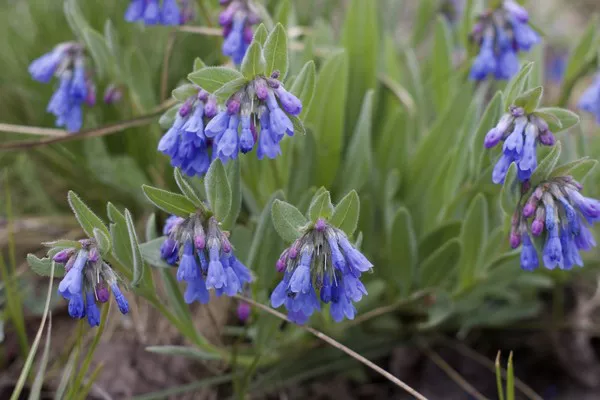Amidst the splendor of vibrant asters and goldenrods that grace the late-season landscape, the closed gentian quietly unveils its distinctive charm. Often referred to as the “bottle gentian” due to its flower’s bottle-shaped appearance, this unique botanical wonder remains an enigma as its petals steadfastly refuse to unfurl.
The closed gentian, a personal favorite of many, perpetually maintains a tightly closed bud-like posture, with its blue-violet petals pointing directly upward, hence its colloquial monikers. Remarkably, only robust insects like bumblebees possess the strength to coax the “closed” petals open and facilitate the pollination process. The precise benefits of this intriguing adaptation remain shrouded in mystery. However, the cunning eastern carpenter bee employs a different approach, by nibbling a hole at the flower’s base, pilfering nectar without contributing to pollination. Nonetheless, these breaches inadvertently provide access for smaller insects, enabling them to pollinate the closed gentian’s flowers.
Residing in meadows, forest edges, and roadsides where partial shade and ample moisture are available, this hardy herbaceous perennial thrives in the ever-changing temperature conditions typically encountered in Centre County during September and October. While the closed gentian gracefully succumbs to the arrival of winter, its tenacious deep-yellow root system survives, awaiting the next growing season.
Typically growing to heights ranging from 12 to 24 inches, the bottle gentian showcases clusters of three to twelve closed flowers crowning its unbranched stem. Glossy, lance-shaped leaves radiate in a whorl beneath the terminal flower cluster, transitioning to an opposite arrangement as they descend the stem. Healthy specimens often feature additional flowers sprouting at the bases of some paired leaves.
The closed gentian finds its roots intertwined with history, bearing the family and genus name “Gentiana,” in honor of King Gentius (180 to 167 BC) of ancient Illyria. Legend has it that King Gentius first uncovered the plant’s roots’ potential in treating malaria, although evidence suggests that the Egyptians may have harnessed gentian’s properties over a millennium earlier. The species name, “andrewsii,” pays homage to the 19th-century botanical artist Henry Andrews.
Gentians, numbering nearly 200 species worldwide, with nearly 100 residing in North America, play a diverse role. While some contribute to alcoholic beverages and feature prominently in Angostura bitters, Native Americans historically employed gentian root-based medicines. The Cherokee relied on it as a laxative and a remedy for stomach ailments, while the Iroquois used it to address headaches, liver disorders, and even as protection against malevolent forces.
Closed gentian thrives in suitable habitats across eastern Canada, the northeastern and midwestern United States, including substantial presence in Pennsylvania. Alarmingly, it’s classified as a threatened species in Maryland and New York and holds the status of a species of conservation concern in Rhode Island and Missouri due to habitat loss. According to the U.S. Forest Service, cultivating closed gentian in moist wildflower gardens proves effortless, as it boasts high resistance to insects and diseases. Propagation can be achieved through both seeds and root division, making it a robust addition to conservation efforts.


